Do you remember the previous Citadel paint range? While many fondly recall the iconic white flip-top Citadel Colour paints of the late 80s and early 90s, it seems that people are less enthusiastic about the paint range of the 2000s. However, this range introduced revolutionary concepts like ready-made washes and extra high-opacity “Foundation” paints. In this video I delve into Games Workshop’s former Citadel Colour range and explore if they still have their place in today’s hobby or are better left forgotten:
Retro Warhammer paint jobs in the style of the models painted in the 90s by the ‘Eavy Metal studio are more popular than ever, with regular “Olden Demon” painting competitions taking place on Instagram, for example. Warcolours recently released their Nostalgia 94 range, an unofficial replica of the Citadel paint range of the 90s, which I reviewed here on Tale of Painters.
Rise and fall of the 1998 – 2012 range
But in this post, I’d like to discuss the successor to the 90s paints and precursor of the current Citadel Painting System. This particular range was initially launched in 1998 and had a total of 75 colours at the start. White Dwarf magazine was the first place for these paints to show up, providing a helpful chart that outlined the appropriate shades and highlights for every colour.


Many colours from the 90s range were adopted under the same name, though most looked quite different in comparison. No wonder, because not only did the formula of the paint itself change, but also the manufacturer. The previous paints were produced by HMG Paints Ltd. in the UK, who were also brought back to make the current Citadel paint range until GW moved the production in-house, and who still make Formula P3, Coat’d’arms, and Foundry paints to this day. The 2000s range was produced by Colart, known for brands like Winsor & Newton and Liquitex, who have production sites in France and China, therefore the reference “Made in France”. Interestingly, the Foundation paints, introduced later on, were produced in China instead.
In 1998, the internet wasn’t a thing yet, so there is a lack of records regarding any shitstorms, but I’m sure many people must have been outrageous with the changeover. The colours between the old and new ranges were inconsistent despite sharing the same names, and the paints became pricier as their content decreased from 18 to 12 ml.
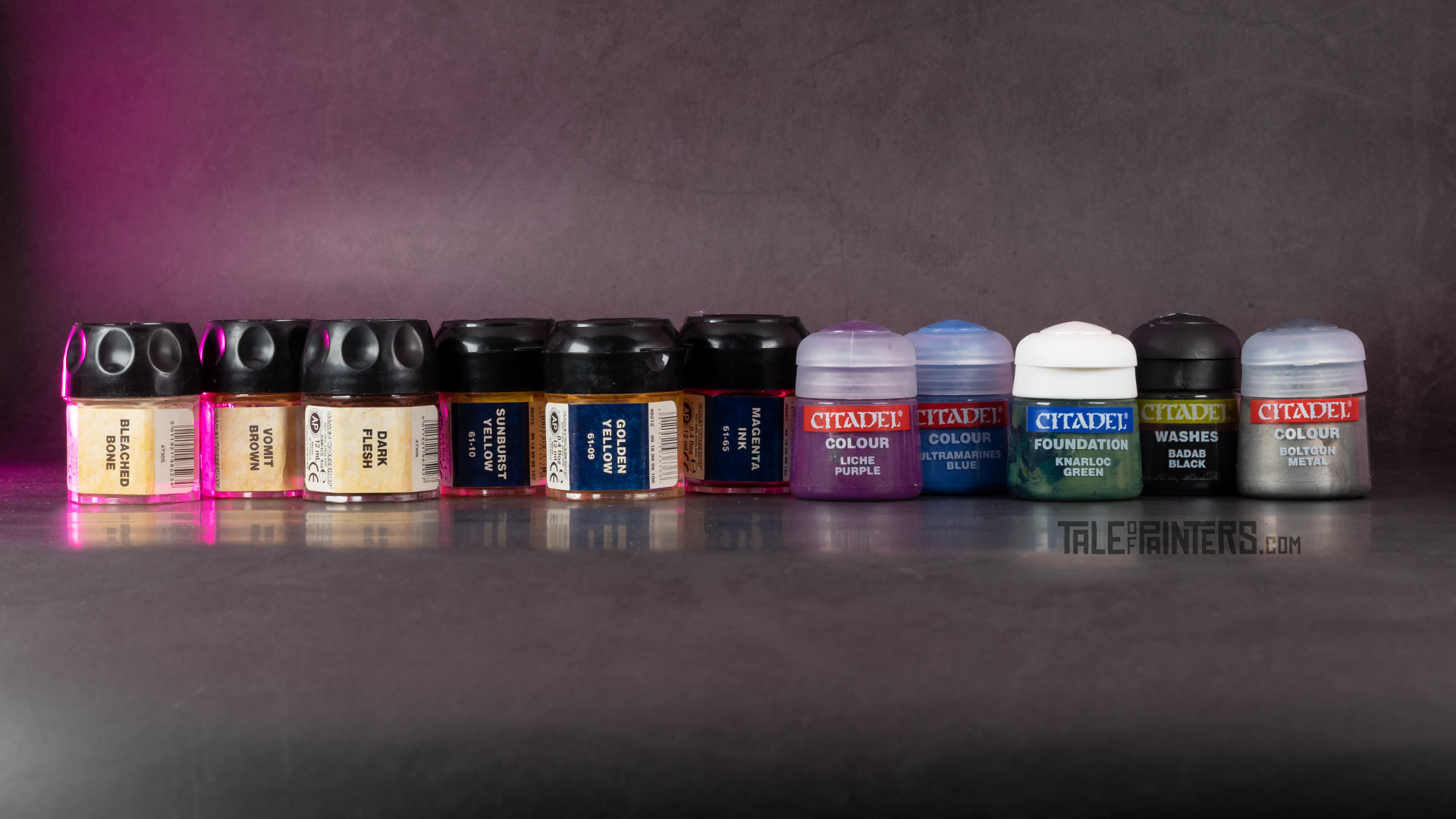

Screw cap woes
Additionally, the new screw-top pots, resembling knobbly bolter cartridges, were a constant source of frustration. As soon as paint collected and dried in the screw threads, the caps jammed, making the pots nearly impossible to open again. Stuck paint also prevented the caps from sealing correctly, causing the paint to dry out in no time. Let me know in the comments about your experiences with the old pots, but I remember hating them.
Games Workshop seemed to notice the issue as well, and after a while, the screw caps were changed to flip-top pots. The black flip-top lids were easier to open and clean, but the hard, inflexible plastic meant they still sealed poorly. At the same time, some colours were removed while new ones were added, downsizing the range from 75 to 67 paints.
Revolutionary at their time: Foundation paints & Citadel Washes
In 2007, the colour range got another expansion, and 18 highly opaque Foundation paints were introduced. One year later, the Citadel Washes followed. During this time, the regular paints were also changed to the transparent rounded flip-top pots, which are pretty much identical to the pots we still have today. When the Washes were released in 2008, all of the Inks and a few other colours were discontinued, shrinking the core range to 47 colours, plus the 8 washes and 18 Foundation paints. After that, the range lasted for about four more years, until it was finally replaced in 2012 with the current Citadel Painting System, which brought an all-new range of paints and colours.
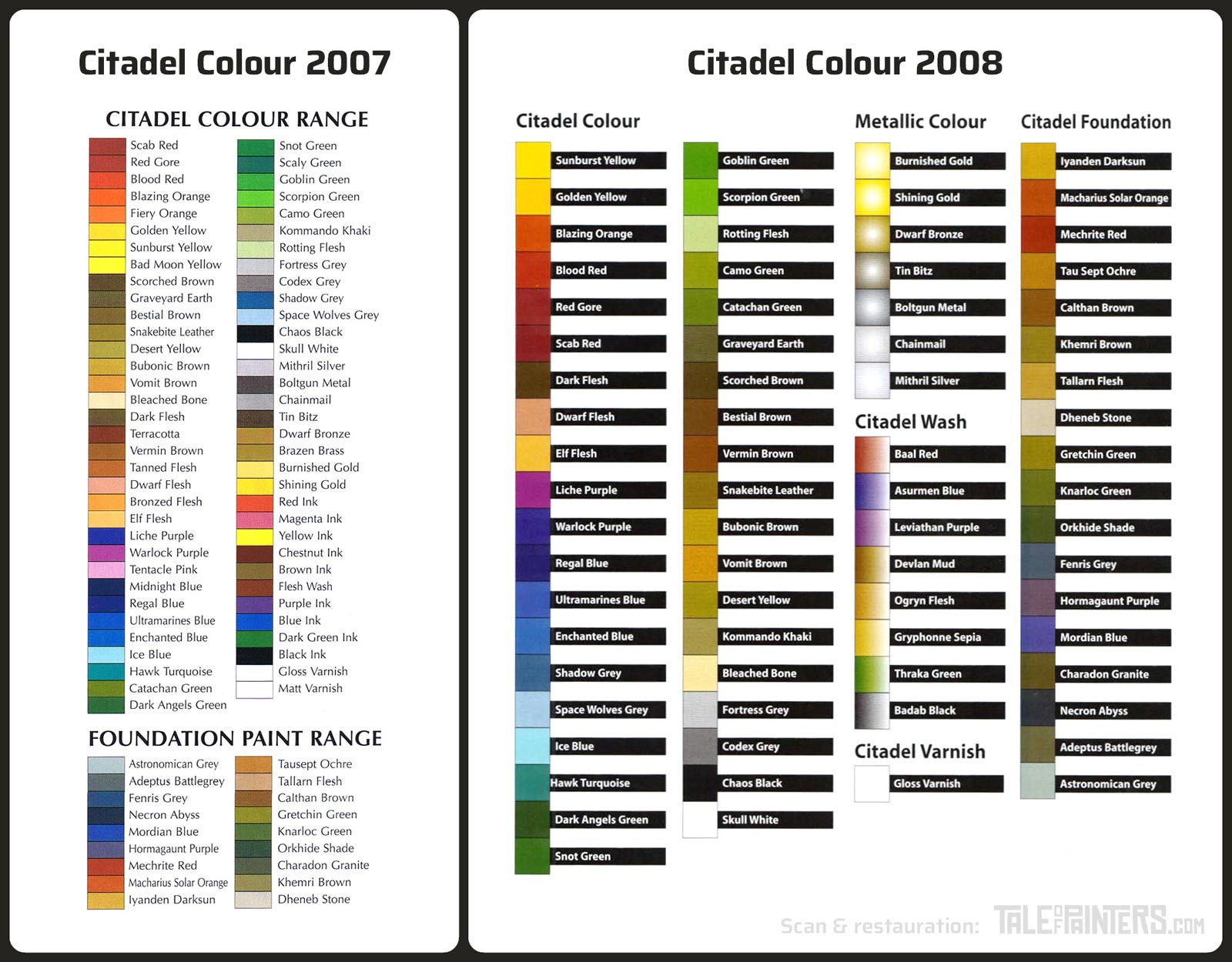

But enough with the history lesson, let’s take a look at how the actual paint performed.
Citadel Colour 1998 – 2012, a retro review
I still have a few of the 2000s Citadel paints in use, and a while ago, I managed to score a large lot of them on a Facebook group, all in in great condition with some pots even unopened. To put the classic paints to the test, I chose to paint a limited edition Firstborn Space Marine Captain for my classic Middlehammer Ultramarines collection, which I began in the 2000s. Naturally, back then I used many paints from the former Citadel paint range for the army’s paint scheme, and while I’ve replaced most colours with their modern counterparts, I was pleased to revisit the original paint recipe for this video.
In general, I’d say that the painting properties of the old range are average by today’s standards. The finish of the colours is somewhat satin, slightly glossier than the current Citadel range. To avoid leaving visible brush marks, I found that diluting these paints is a must, as they dry rapidly and their self-levelling properties aren’t that great. The opacity is also only average and comparable to Layer paints of today, with some colours performing better than others, of course. It were the lighter colours such as red, yellow, and bone that caused headaches for many hobbyists because of their poor coverage. I feel that the reds and yellows of the current Citadel range, while still not perfect, were a noticeable improvement.
However, the one thing I loved about these paints was their intensity. For example, the darker greens like Snot Green and Dark Angels Green were incredibly rich and deep, no comparison to their counterparts from the Vallejo Game Color range or Caliban Green. And Warlock Purple, or the orange tones… In fact, Blazing Orange and Fiery Orange were the most vibrant and saturated orange paints ever produced.
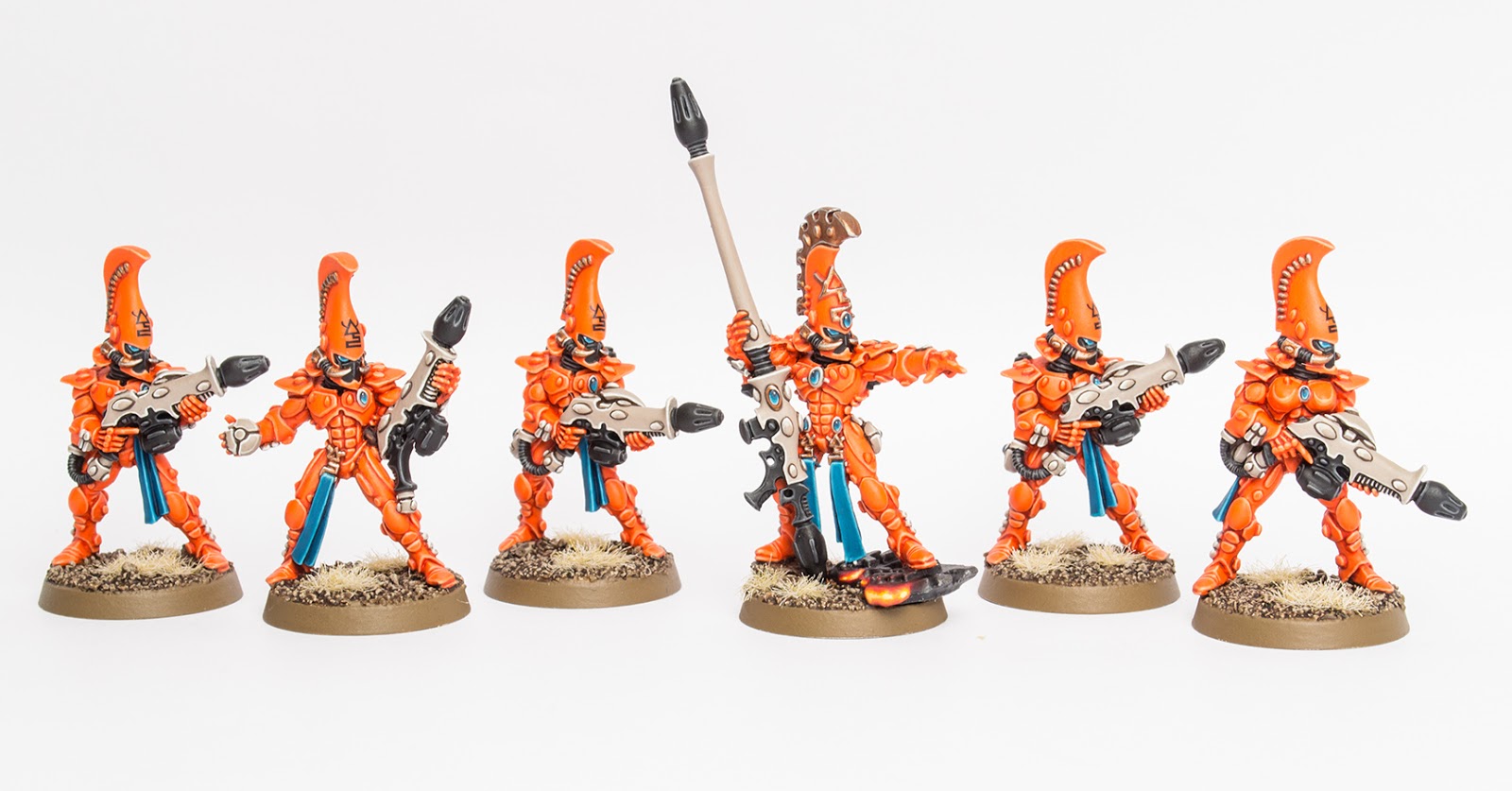

I used Fiery Orange as the base colour for my Aeldari Fire Dragons, and the camera struggles to capture the luminosity of this colour. Despite testing pretty much all miniature paint ranges over the years, both for Tale of Painters and myself, I have yet to encounter a light orange paint that matches the vibrancy of Fiery Orange. By comparison, Troll Slayer Orange and Fire Dragon Bright from the current range appear almost pastel-like.
The metallics
Now, the metallics were generally pretty good, except for the golds. Shining Gold and Burnished Gold were rather weak, lacking the opacity of Retributor Armour and Liberator Gold from today. However, the bronze colours were quite nice, and the silver paints were excellent.
In the video, I’m using Boltgun Metal to paint the steel parts, and similar to Chainmail and Mithril Silver, it provides near-perfect coverage in a single coat. All of the metallic paints contain super fine metallic particles, finer than the current generation of metallic paints from Games Workshop. The only downside was that they all dried super quickly, but that hasn’t changed much with the current generation of Citadel paints.
Before Base paints came Foundation paints
Foundation paints were the spiritual predecessor of the Base paints of today. When they were introduced in 2007, they were advertised as providing complete coverage in a single coat only. Of course, this was marketing speech and only worked if you applied a really thick layer to the model. The formula and painting properties of Foundation paints differed significantly from those of the regular Citadel Colours at that time and the current Base paints. While modern Base paints could be described as slightly heavier Layer paints, Foundation paints had a distinct feel. They had a heavier body with lots of clay-like additives to enhance opacity, resulting in more muted tones. Achieving a smooth coat required a lot of shaking, and a good amount of thinning, as they separated a lot and dried super quickly. However, thanks to their high pigmentation, they still provided decent coverage in about two thinned coats. And the muted colours filled a gap in the Citadel paint range at the time, which predominantly featured vibrant hues.
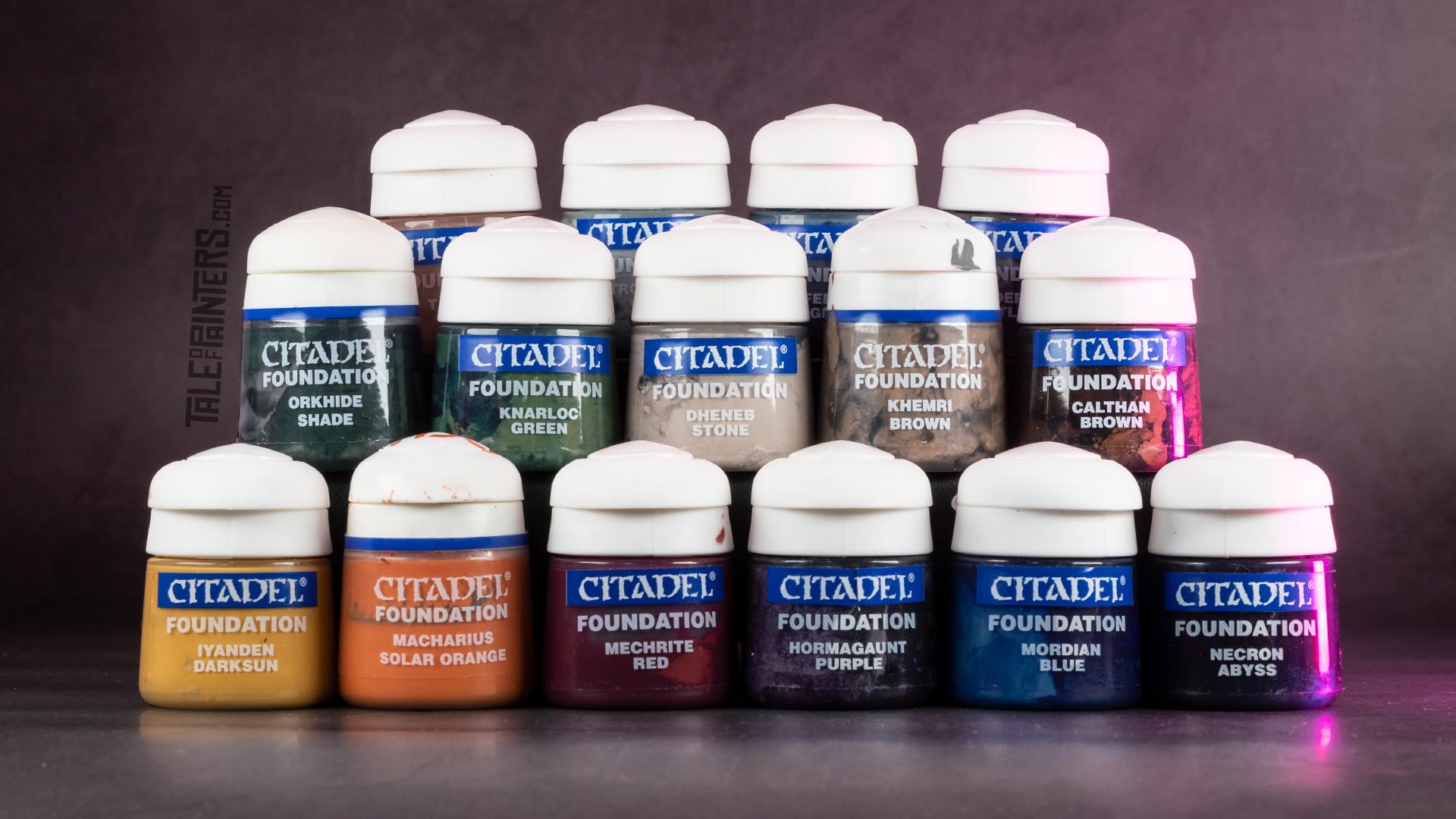

Some of my favourites included Mordian Blue, the primary colour of my Firstborn Ultramarines army (see the tutorial here). It’s slightly less saturated than Macragge Blue and the perfect Ultramarines armour colour, in my opinion. When it comes to red, however, I prefer the new Mephiston Red Base paint over Mechrite Red, and the same applies to Averland Sunset, which is also more vibrant than its Foundation predecessor.


I also adored Tallarn Flesh, the best covering Caucasian skin tone ever produced. It closely resembles Cadian Fleshtone but achieves perfect coverage in two to three thin coats. Khemri Brown, a beautiful muted khaki brown, served as the base colour for the robes of my Ultramarines, and Dheneb Stone was equally impressive. It was slightly lighter than Rakarth Flesh but provided just as good, if not better, coverage. Other colours such as Charadon Granite are fondly remembered as well, and Macharius Solar Orange was the best covering orange paint ever made.
Overall, I have fond memories of the Foundation range and cherish the remaining pots I have, despite their thick consistency.
Citadel Inks & Washes
Can you imagine that in the 2000s, washes or Shade paints as we know them today didn’t exist? Instead, there was a range of highly pigmented Inks. Many people fondly remember Chestnut Ink as the Eavy Metal team’s go-to colour for shading gold at the time. However, I must admit that I was never a big fan of the Citadel Inks. They dried with a glossy finish and their flow properties were rather poor. I found they were really only suitable for panel lining and recess shading, and as a teenager, I found it hard to get the hang of them. In fact, I preferred the Inks from the Vallejo Game Color range, and nowadays, I like to use Contrast and Speedpaint instead. Feel free to share your experiences with the old Citadel Inks in the comments below and tell me if I’m wrong!
As mentioned above, ready-made washes just didn’t exist back then, can you believe it? Since there were also no specially formulated mediums like Lahmian or Contrast Medium, people had to experiment with acrylic artist mediums or dish-washing liquid to make washes out of the inks. So it’s not an overexaggeration to say that the introduction of Citadel Washes in 2008 revolutionized miniature painting, comparable to the impact of Contrast and Speedpaints today. These washes enabled many people who thought they couldn’t paint to achieve better results, lowering the entry level to this beautiful facet of the hobby.
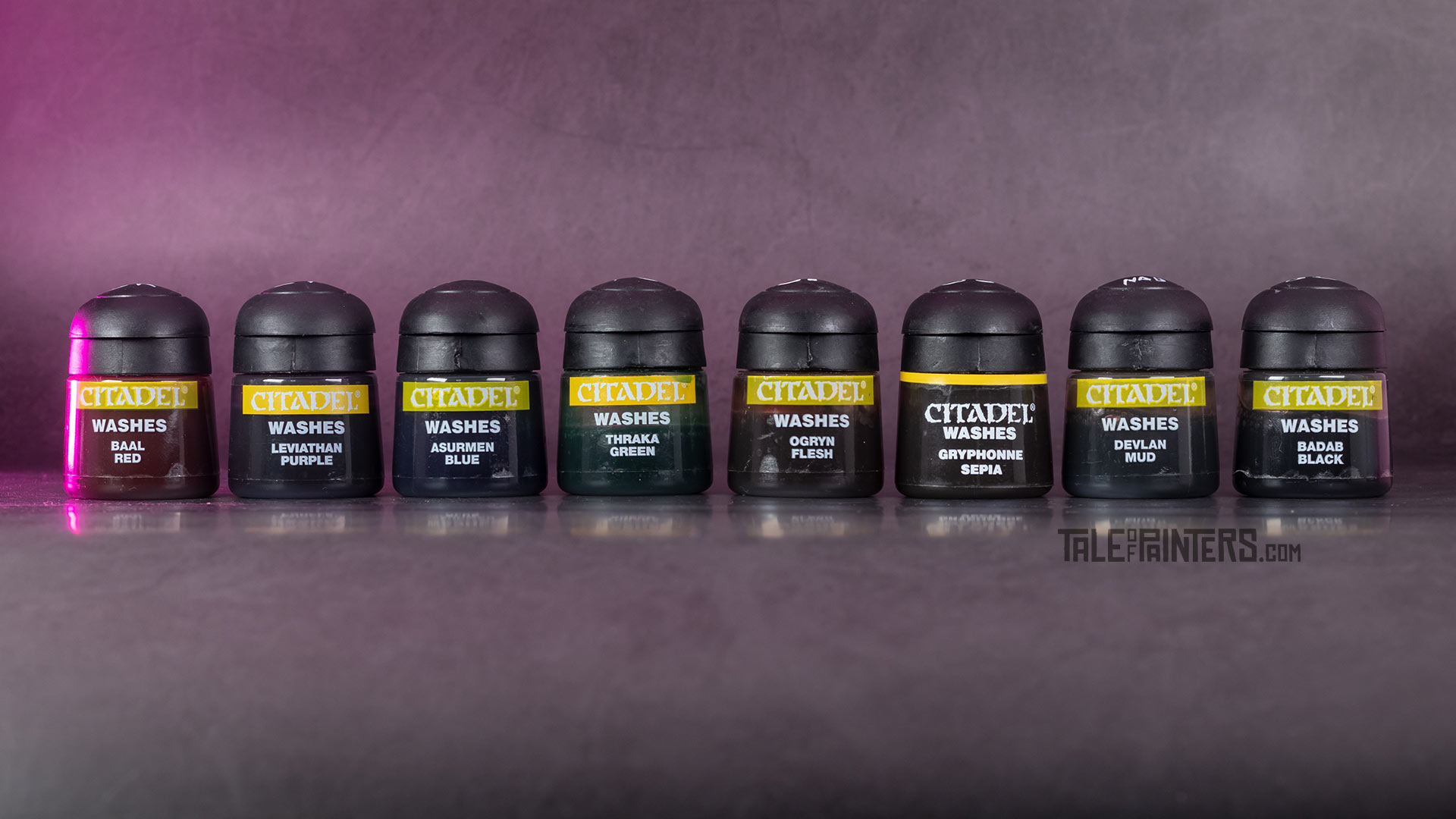

And truly, the eight Citadel Washes were fantastic – apart from the smell. They had a slightly higher viscosity than today’s Shade paints but still settled beautifully into the model’s recesses. When the Citadel range was relaunched in 2012 and the washes were replaced with Shade paints, I didn’t make the transition. Personally, I preferred Badab Black over Nuln Oil, and Devlan Mud over Agrax Earthshade due to their flow properties and the slightly more blackish brown tone of Devlan Mud.
Fortunately, The Army Painter filled the gap with their Quickshade washes, which closely resemble the formula of the old Citadel Washes. Nowadays, I prefer the new formula Citadel Shade paints, which I reviewed here. However, I can still highly recommend The Army Painter’s washes, even though you can get a bottle every now and then that can be quite shiny.
The painted Ultramarines Captain
Here he is, my version of Captain Mikael Fabian of the Ultramarines’ third company. Painted with the Citadel paint range of the 2000s, alongside a handful of old Vallejo Game Colors and Army Painter washes.
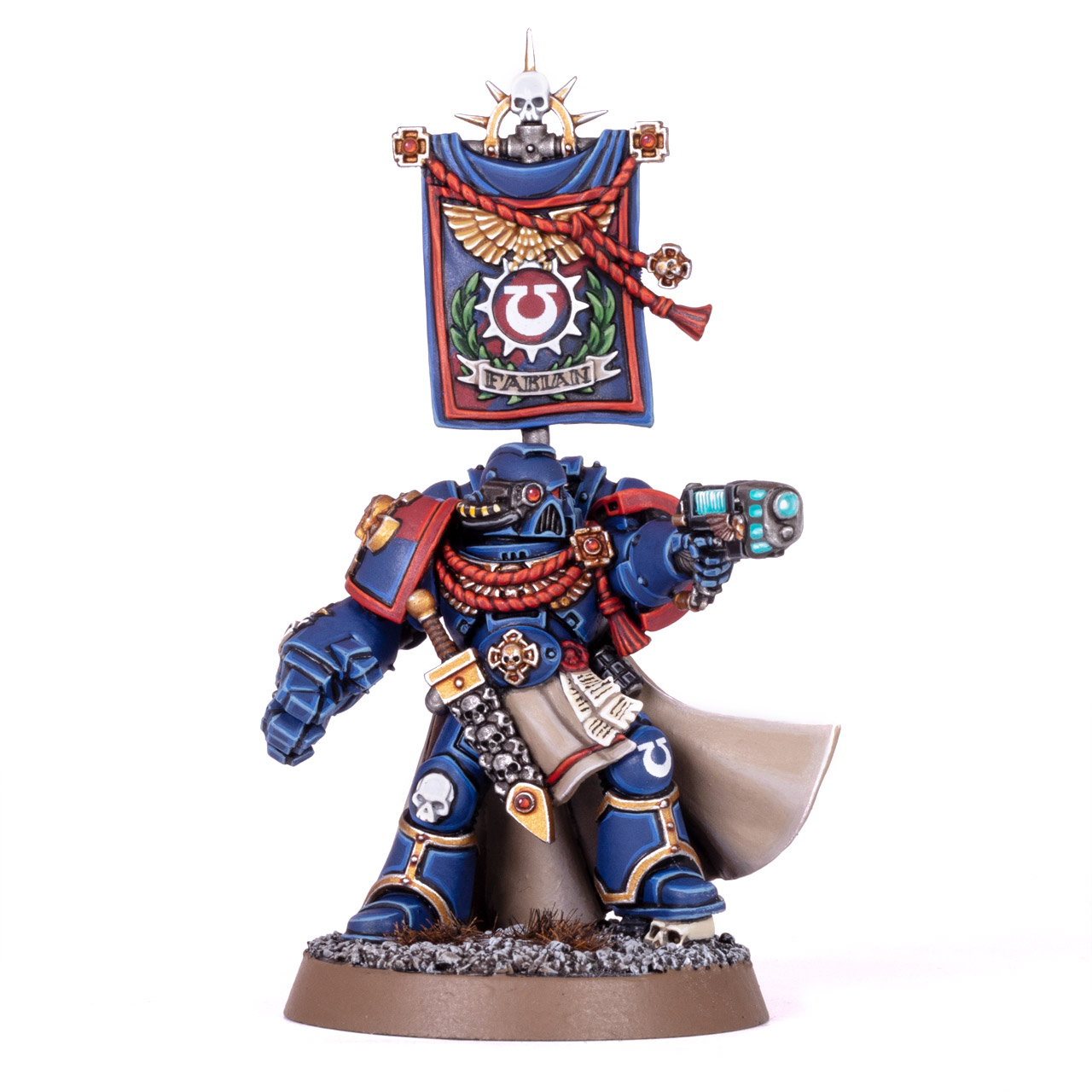

Captain Fabian will make a great addition to my classic Middlehammer Firstborn Ultramarines collection, and painting him was an enjoyable trip down memory lane.
Conclusion
Now, looking beyond nostalgia, does the 1998 to 2012 Citadel paint range still hold up today?
I would say, unless you have an emotional connection to that time period or require specific colours for recreating old paint schemes, you’re not missing much. In fact, the only colours I still regularly use are a handful of the more vibrant colours and my favourites from the Foundation paints. I feel that the current Citadel paint range has improved in many aspects, despite a dip in quality a couple of years ago when Games Workshop moved the paint production in-house.
And if you look beyond Games Workshop, these days we are spoiled with a plethora of excellent miniature paints that surpass the 2000s range in terms of quality, pigmentation, and ease of application. Brands like Two Thin Coats (review here), AK 3rd Gen, ProAcryl, and the revamped Vallejo Game Color range (review here) all have raised the bar, just to name a few.
Speaking of Game Color, did you know that the old Game Colors from Vallejo were actually the competitor, dare I say copycat product to the 2000s Citadel paint range? Vallejo recreated most of the colours as closely as possible. Rumour has it that Games Workshop initially considered handing over paint production to Vallejo, but when that didn’t materialize, Vallejo is said to have released the paints under their own Game Color label. While I have my doubts about that story, Game Color continues to thrive today. Last year, with the assistance of painting legend Angel Giraldez, the line underwent a complete overhaul, resulting in fantastic quality paints at an amazing price point, so be sure to read my in-depth review here.
Thanks a lot, don’t forget to watch the video, and if you liked this retro review, please leave a reaction and/or comment below. Happy hobbying!








What? How can you say that before 2000s ready-made washes just didn’t exist back then? They existed from the end of 80’s as there were inks, washes and even glazes:
http://collector-info.com/Manufacturer/GAW/GAWPAT/Paints-Colour-Washes-Inks-Shade.html
True, but the 2000s Citadel Washes were the first with a “just slap it on” quality. Have you tried the 80s/90s Citadel washes? They were horrible in comparison.
Chestnut ink… my best memory from it is the smell !!
There were pre-formulated washes in the range that preceded this, glazes too.
Other than that nitpick, a solid review in a similar vein to how I feel about this range.
I still have a decent amount of these that I transferred to droppers years ago, but they don’t really see any use.
Might have to dig them out and refresh my memory.